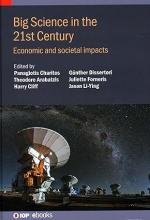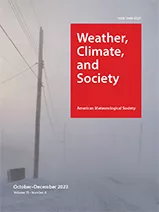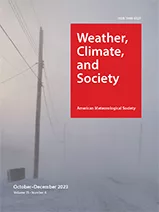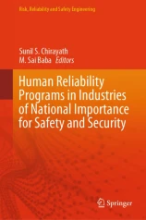Publications

|
Dinesh Kumar Srivastava India’s Road to HEP Co Authored with V S Ramamurthy. In: “Big Science in the 21st Century: Economic and Societal Impacts”, eds P Charitos, T Arabatzis, H Cliff, G Dissertori, J Forneris, and L Li-Ying, 2023 We discuss here India’s participation in CERN activities in the field of experimental high energy and particle physics and in the creation of new facilities including the Large Hadron Collider. This participation has not only opened new opportunities for young researchers from India but has also become a model for several other international collaborations in which India is taking part. |

|
Anindya Sinha Nāgādhyakshaçaritha: Elephant–mahout relationships in two communities of southern India. Co-Authored with Sreedhar Vijayakrishnan, Composing Worlds with Elephants: Interdisciplinary Dialogues (Eds. Láine N, Rahmat K and Kiel P). IRD Editions, Montpellier, France, pp. 67-81. In modern India, beginning from their role as war animals, domesticated elephants have come a long way, contributing in various ways to the socioeconomic development and public life of different communities across the Indian subcontinent. In this paper, we briefly trace the unique history of mahoutry in Kerala and discuss the unique nature of this interspecies relationship in two communities, the Malayalis of Kerala and the Malasar of the Anamalai hills in the Western Ghats mountains, reflecting on the widely differing nature of the husbandry practices that have traditionally forged elephant–human relations across southern India. |

|
Anindya Sinha The outliers: An interplay of space, knowledge, and capabilities in defining human–elephant relations in rurban southern India Co-Authored with Nishant M Srinivasaiah, Composing Worlds with Elephants: Interdisciplinary Dialogues (Eds. Láine N, Rahmat K and Kiel P). IRD Editions, Montpellier, France, pp. 67-81. Hiristor and Mak, two rurban male Asian elephants, culturally more synurbised than their forest counterparts, traverse a production landscape – once a forest but now teeming with people and infrastructure – in southern India, trying to come to terms with their newly lived spaces and the novel experiences driving them. A complex interplay of space, knowledge, and capabilities has created a new generation of ‘outlier’ elephants, who have no option but to develop novel, potentially adaptive, behavioural strategies to live alongside humans. This rapid synanthropisation of the elephant populations of peninsular India, we suggest, requires an urgent realisation of the latent capabilities of both people and elephants to enable their peaceful, but vital, coexistence in the troubled times of the Anthropocene. |

|
Anindya Sinha Political and affective ecologies of human–elephant relations: A gendered perspective. Co-Authored with Sayan Banerjee. Composing Worlds with Elephants: Interdisciplinary Dialogues (Eds. Láine N, Rahmat K and Kiel P). IRD Editions, Montpellier, France, pp. 29-47. The behavioural relations between humans and wild Asian elephants at the forest-farmland interfaces are both political and affective, and these stem from the spatio-temporal ordering of land and livelihoods, which, in turn, emanate from power negotiations between different actors, both human and nonhuman. We study how the embodied encounters between humans and wild elephants in northeastern India, manifest through the interpersonal flow of affects, shape the political decisions related to their coexistence and shared lifeworlds, and propose gender as an entry point to understand these connections closely, at least from the human perspective. |

|
R Srikanth Role of Agrometeorological Advisory Services in Enhancing Food Security and Reducing Vulnerability to Climate Change https://doi.org/10.1175/WCAS-D-22-0130.1 Co-authored with Nannewar, R. G. & Kanitkar, T. (2023). Role of Agrometeorological Advisory Services in Enhancing Food Security and Reducing Vulnerability to Climate Change. Weather, Climate, and Society, 15(4), 1013-1027. |

|
Tejal Kanitkar Role of Agrometeorological Advisory Services in Enhancing Food Security and Reducing Vulnerability to Climate Change https://doi.org/10.1175/WCAS-D-22-0130.1 Co-authored with Nannewar, R. G. & Srikanth, R. (2023). Role of Agrometeorological Advisory Services in Enhancing Food Security and Reducing Vulnerability to Climate Change. Weather, Climate, and Society, 15(4), 1013-1027. |

|
Rakesh G Nannewar Role of Agrometeorological Advisory Services in Enhancing Food Security and Reducing Vulnerability to Climate Change https://doi.org/10.1175/WCAS-D-22-0130.1 Co-authored with Kanitkar, T., & Srikanth, R. (2023). Role of Agrometeorological Advisory Services in Enhancing Food Security and Reducing Vulnerability to Climate Change. Weather, Climate, and Society, 15(4), 1013-1027. |

|
Dinesh Kumar Srivastava Myriad Ways in Which Things Could Have Gone Wrong but Did Not https://link.springer.com/chapter/10.1007/978-981-99-5005-8_22 In: Chirayath, S.S., Sai Baba, M. (eds) Human Reliability Programs in Industries of National Importance for Safety and Security. Risk, Reliability and Safety Engineering. Springer, 2023 The Variable Energy Cyclotron Center (VECC) at Kolkata has a K130 room-temperature cyclotron that has been operating since 1977, a K500 Cyclotron operating since 2009, a K30 medical cyclotron and a radioactive ion beam facililty. It has a large number of very high voltage or very high current power supplies, liquid helium plants, and very many vacuum pumps sophisticated and delicate equipment. Yet, in the last more than 5 decades of its operation there have been no serious accidents or leakage of radioactivity. This has been possible by a strict regime of retraining and strict adherence to standard security precaution, and an active and understanding leadership. This chapter describes some of these efforts. |
